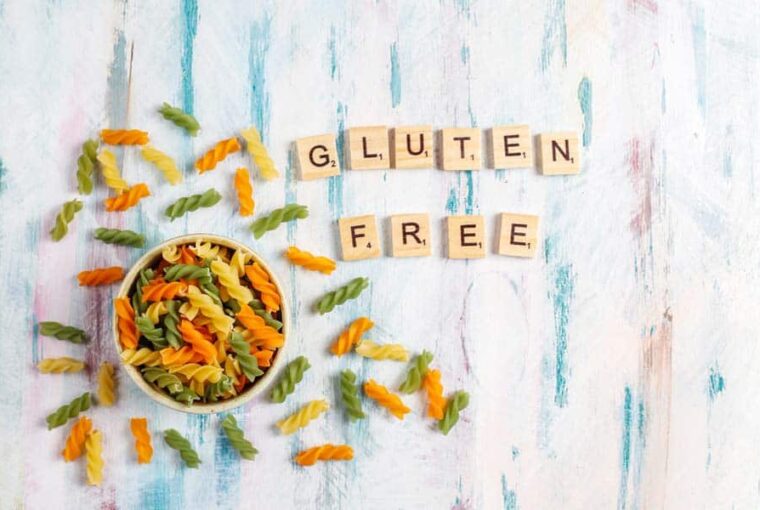In recent years, the rise of gluten-free diets has become a significant focus for many individuals, especially those diagnosed with celiac disease or non-celiac gluten sensitivity. Gluten, a protein found in wheat, barley, and rye, can trigger adverse health effects in sensitive individuals, making the identification of gluten-free foods crucial for their well-being. Among the myriad of snacks available, Goldfish crackers stand out as a popular choice for both children and adults alike. This raises an important question for those adhering to gluten-free diets: Are Goldfish crackers gluten-free? This article aims to explore the gluten content in Goldfish crackers, offering essential insights for those navigating the complexities of gluten-free snacking.
Are goldfish gluten-free?
No, traditional Goldfish crackers are not gluten-free as they are made with wheat flour, which contains gluten. However, Pepperidge Farm, the manufacturer of Goldfish crackers, offers a gluten-free alternative called “Goldfish Puffs,” catering to those with gluten sensitivities or celiac disease. Always check the packaging for specific gluten-free labeling to ensure the product meets your dietary needs.
Overview Of Goldfish Crackers
Goldfish crackers have been a beloved snack for decades, known for their distinctive fish shape and savory taste. Introduced by Pepperidge Farm in the United States in 1962, these crackers quickly became a staple in households across the country. Originally from Switzerland, where they were first created in the late 1950s, Goldfish crackers were brought to the American market with the intent of providing a fun, tasty snack option for children and adults alike. Their playful shape and variety of flavors have made them a go-to choice for snacking, party mixes, and even as a crunchy addition to soups and salads.
The primary ingredients of Goldfish crackers include wheat flour, vegetable oils, and seasonings, which vary depending on the flavor. Traditional flavors like Cheddar have been joined by a wide array of other options, including Parmesan, Pretzel, and even sweet versions like Vanilla Cupcake. This diversity in flavors has allowed Goldfish crackers to appeal to a broad audience, with each variety offering its unique taste profile. Despite the variations, all Goldfish crackers share the common characteristic of being baked, which contributes to their crispy texture and lighter feel compared to fried snacks.
Pepperidge Farm has expanded the Goldfish line over the years to include not just different flavors but also whole-grain options, providing a slightly healthier alternative to the original recipe. These efforts reflect a growing consumer demand for snacks that balance taste with nutritional benefits. However, it’s important to note that while some Goldfish varieties offer whole grain benefits, they still contain gluten, as wheat is a primary ingredient.
The brand’s commitment to innovation and quality has kept Goldfish crackers popular among snack lovers. With their recognizable packaging and the iconic smile on each cracker, Goldfish has become more than just a snack; they’re a cultural icon that represents fun and deliciousness. Whether used as a snack for school lunches, a treat at parties, or a comforting nibble at home, Goldfish crackers continue to capture the hearts and taste buds of people of all ages.
How To Identify Gluten-Free Snacks?
Identifying gluten-free snacks requires a combination of careful label reading, understanding gluten-free certification marks, and being aware of potential cross-contamination. Here’s a guide to help you navigate the process:
1. Read Labels Carefully: The first step in identifying gluten-free snacks is to read the ingredient list on the packaging. Look for any mention of wheat, barley, rye, and derivatives like malt (which is usually made from barley) or triticale (a wheat-rye hybrid). These are the primary sources of gluten in foods. In many countries, food labeling laws require that allergens, including gluten-containing grains, be clearly listed.
2. Look for Gluten-Free Certification: Many products carry gluten-free certification marks from reputable organizations. These certifications indicate that the product has been tested and meets strict gluten-free standards. Common certifications include those from the Gluten-Free Certification Organization (GFCO), Celiac Support Association (CSA), and Coeliac UK. Products bearing these logos are generally safe for individuals with celiac disease or gluten sensitivity.
3. Understand “Gluten-Free” Labeling: In several countries, including the United States, products labeled as “gluten-free” must contain less than 20 parts per million (ppm) of gluten, which is considered a safe threshold for most people with celiac disease. However, it’s important to understand that “gluten-free” labeling standards can vary by country, so knowing the regulations in your area is crucial.
4. Beware of Cross-Contamination: Even if a product is made with gluten-free ingredients, it can become contaminated with gluten if it’s processed on the same equipment or in the same facility as gluten-containing products. Some labels might indicate if there’s a risk of cross-contamination, but not all do. When in doubt, contact the manufacturer for more information.
5. Use Gluten-Free Shopping Lists and Apps: Many organizations and websites offer gluten-free shopping guides and lists that can help you identify safe products. Additionally, several mobile apps are designed to scan product barcodes and provide information on whether they’re gluten-free, making it easier to shop for safe snacks.
6. Prepare Homemade Snacks: When possible, preparing homemade snacks gives you complete control over the ingredients, ensuring they are gluten-free. It also allows you to experiment with gluten-free flour and other ingredients to create delicious and safe snacks.
Conclusion
In conclusion, while traditional Goldfish crackers are not gluten-free, there are alternative options available, such as Goldfish Puffs, for those following a gluten-free diet. Identifying gluten-free snacks requires diligence in reading labels, understanding gluten-free certifications, and being aware of potential cross-contamination. With the growing availability of gluten-free alternatives and increased labeling transparency, individuals with gluten sensitivities can enjoy a wide variety of safe and tasty snacks without compromising their health or dietary restrictions.
FAQs
1. Can People With Celiac Disease Eat Traditional Goldfish Crackers?
No, traditional Goldfish crackers contain wheat flour, which is a source of gluten and not safe for individuals with celiac disease.
2. Are There Any Gluten-Free Versions Of Goldfish Crackers?
Yes, Pepperidge Farm offers a gluten-free alternative called Goldfish Puffs, catering to those with gluten sensitivities.
3. How Can I Tell If A Snack Is Truly Gluten-Free?
Look for gluten-free labels and certifications from reputable organizations, read ingredient lists for hidden sources of gluten, and consider potential cross-contamination risks.
4. Is It Safe To Eat Products Labeled “Gluten-Free” If I Have A Severe Gluten Intolerance?
Products labeled “gluten-free” must meet strict standards (like containing less than 20 ppm of gluten), making them generally safe for people with gluten intolerance. However, individual sensitivity levels vary.
5. Can Cross-Contamination Occur In Gluten-Free Products?
Yes, cross-contamination can occur if gluten-free products are processed on the same equipment or in the same facility as gluten-containing products, posing a risk for those with severe sensitivities.




